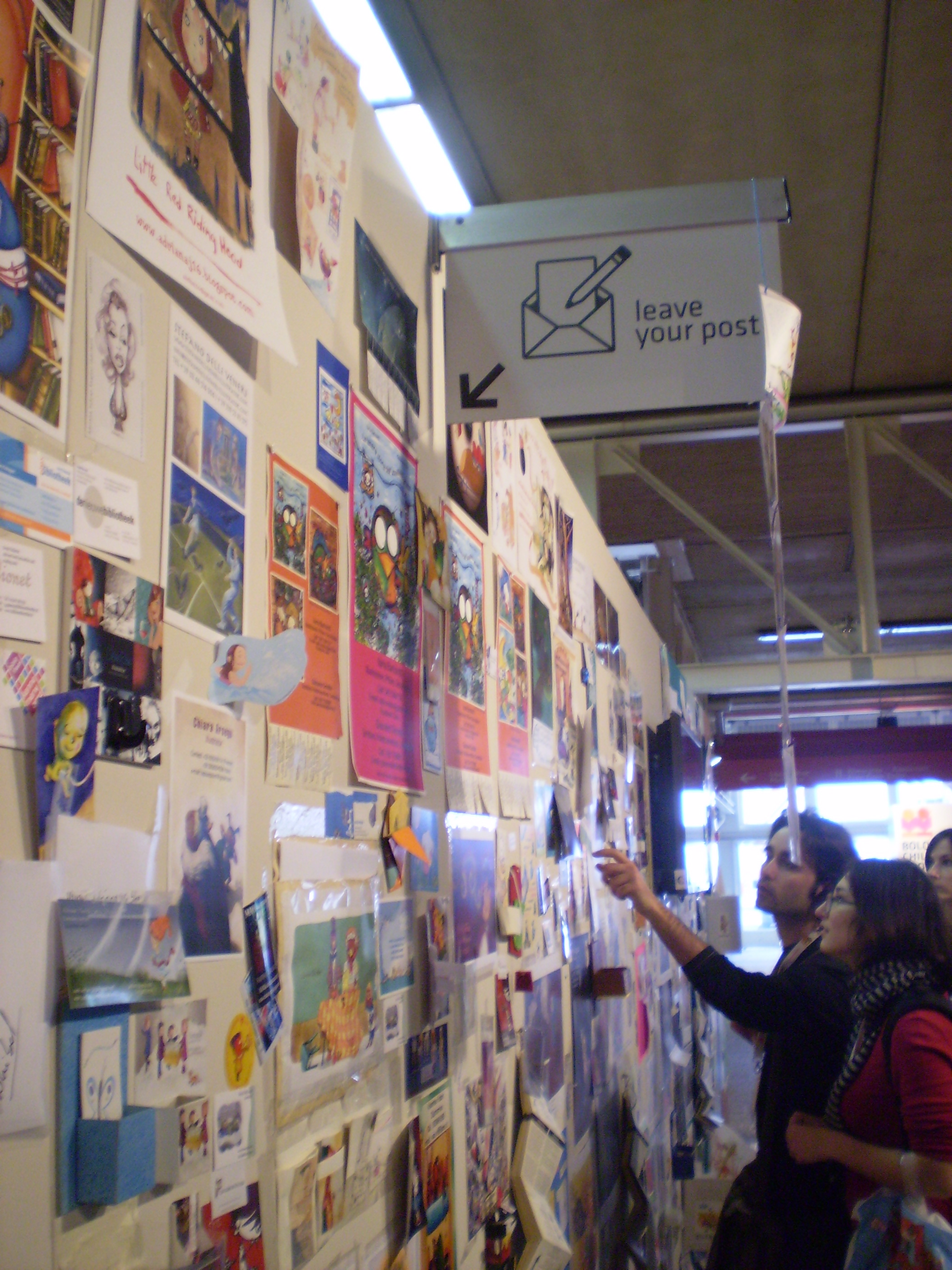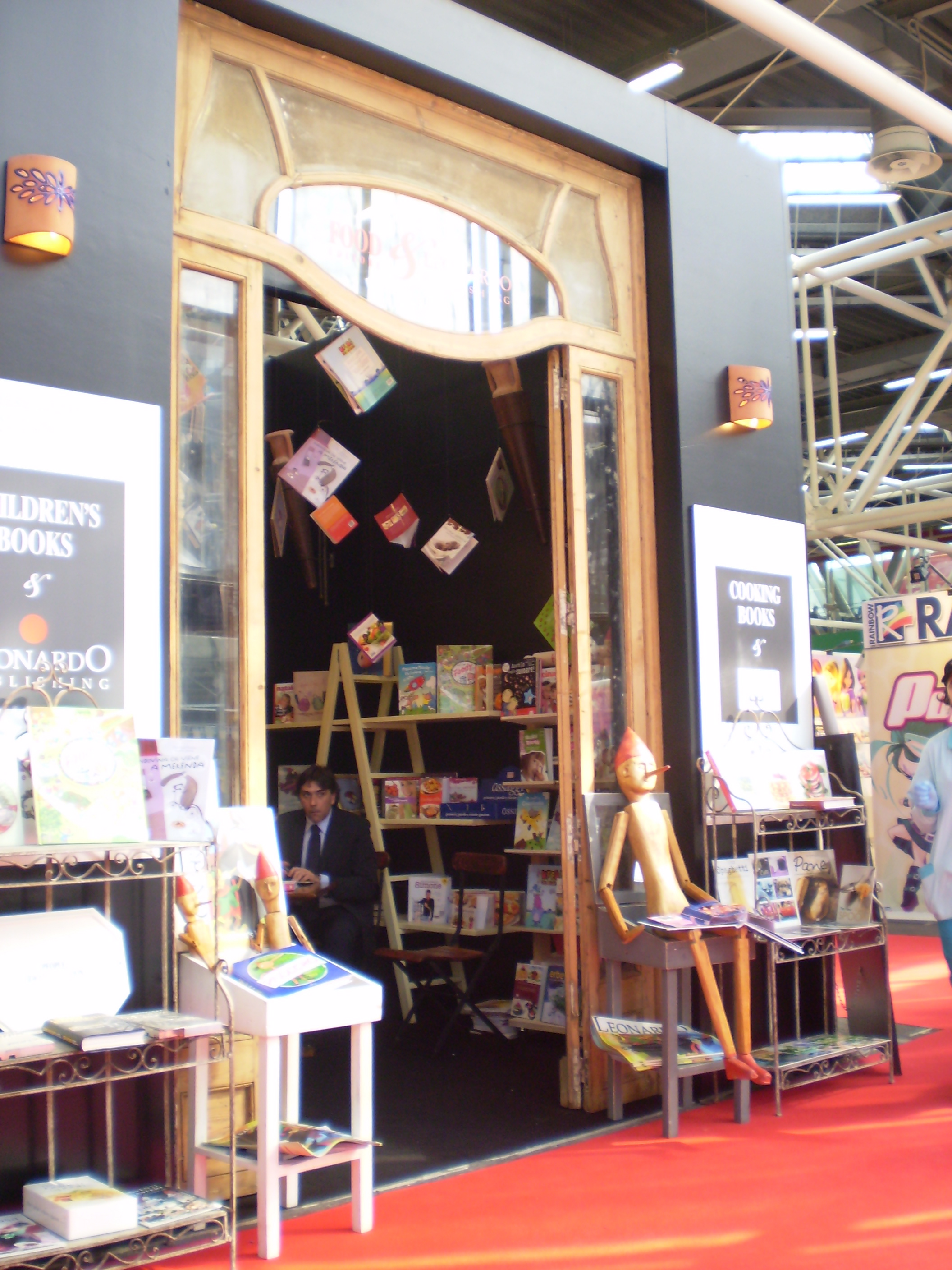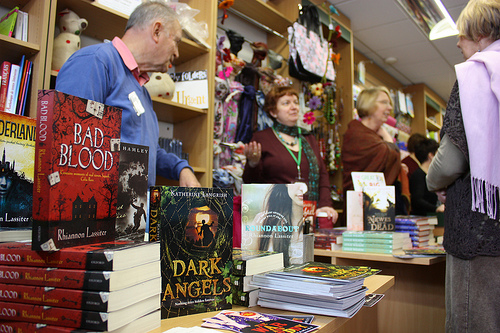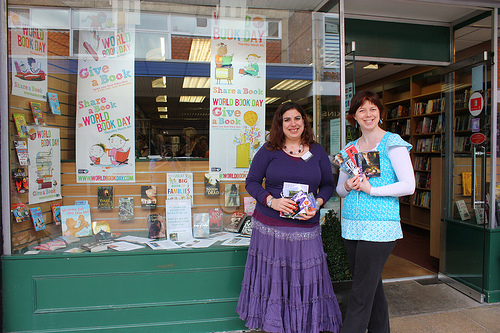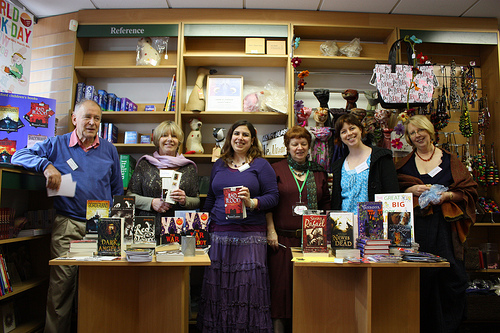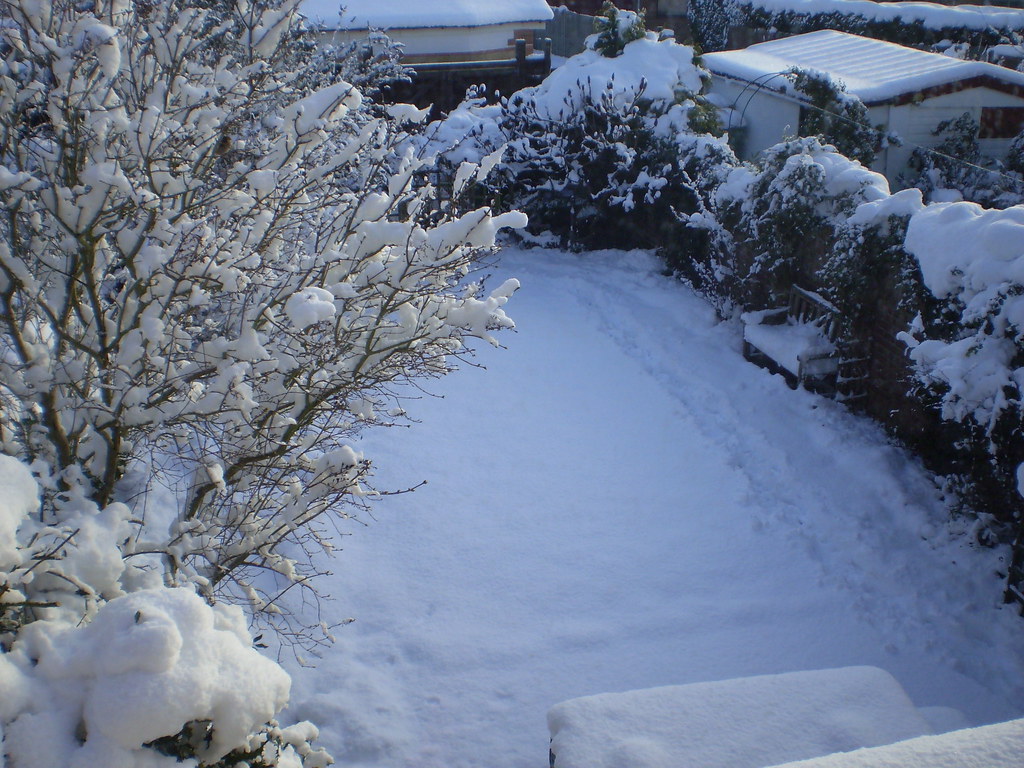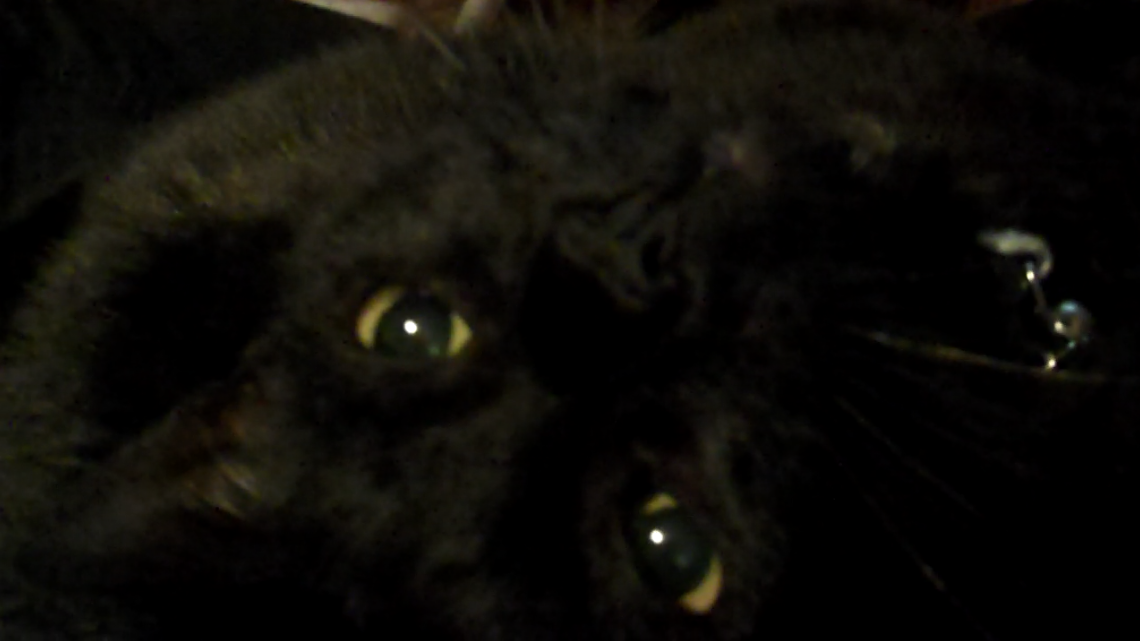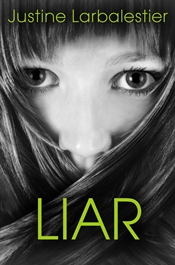
Bologna 2010
Last week I was in Italy for the Bologna book fair. This is the biggest trade fair for the childrens books industry and a great opportunity for me to meet my overseas publishers.
I went with my mother, Mary Hoffman, who was wearing two hats for the fair (no, not literally). She was visiting her publishers as an author but also writing about the fair for Carousel magazine. She’s written about the fair on her Book Maven blog.
As you can see from the photo to the left, this was not a sunny Italian holiday. Sometimes it rains, sometimes the sun shines, it’s even been known to snow. This was warm but grey weather. But inside the fair was as colourful as ever. I’ll try and give you a flavour of that in words and pictures…
The most colourful part of all is the illustrator’s wall. Last year this was a cube in the entrance area but this time it hall spilled out along one wall of the central atrium area. This is where aspiring illustrators come to post their wares. It carries posters, flyers, brochures and business cards, overlapping and spilling out form the wall itself on to the floor. I took a video when it was still in creation. By the end of the fair there wasn’t a spare bit of wall to be seen. (I was hoping to be able to embed the video into this post but YouTube is still processing it as I write this, so I’ll add the link later.)
You don’t get a lot of authors at Bologna, only a scattering from across the world. But there are illustrators aplenty from local universities and art schools and some do travel from other countries to show their wares at the fair. It’s tough for them to get noticed on the wall or get appointments at the stand and this is a rough market for all unpublished creative people. I asked some publishers if they look at unsolicited art and the consensus seems to be (as with writing right now) that if your stuff is amazing, it will get noticed, but it does need to be amazing to sell.
Not a lot of art directors visit Bologna either. You’re much more likely to find people from rights, sales, and marketing. Publishing directors, art directors and MDs do visit but not necessarily and it’s difficult to get appointments with these worthies. If you’re an illustrator, Bologna is a wonderful place to see the market and get to know the styles used by different publishing houses but it’s not the best place to try and sell your work.
The exhibition centre has many halls, and the book fair uses four of these in addition to the central atrium. This means four halls of publishers’ stands, clustered roughly in country groupings. Some stands are three walls with bookshelves, others are huge fortresses with crenellations, shields and tabards. See some of them on my Flickr events page.
There’s an obvious hierarchy. Big rich publishing houses have big colourful stands. Small houses have hopeful little stands. Of course it’s possible to spend a lot badly or a little well. I’ve seen giant boxes with no display space at all and tiny cubicles full of cunningly worked displays. As with the illustrators’ wall the publishers are here to sell themselves and some do with with real panache. Selling and buying is the order of the day and big deals are being done. The most talked about book at the fair this year was The Emerald Atlas, a junior title which has already sold to the USA, Germany, Italy, Holland and Norway. Rumours abounded that each deal was for a million euros plus.
Meanwhile the other 95% of the fair was getting on with the daily business of more earthbound deals. It’s a privilege for me to be able to meet overseas publishers in person and talk about the market in their country.
The good news for me is that Bad Blood is still selling well abroad. German sales of the hardback alone are very encouraging and the book is paperbacked this year. I met my German editor, Antje Keil of Fischer Verlage, for the second time and sat in a brief splash of sunshine to talk about the book. It’s reassuring to know that such an English book with a Lake District setting, can be popular with German readers. I do feel though that I should try to write some more international settings. That won’t be true of my next book though: Ghost of a Chance is set in an English stately home.
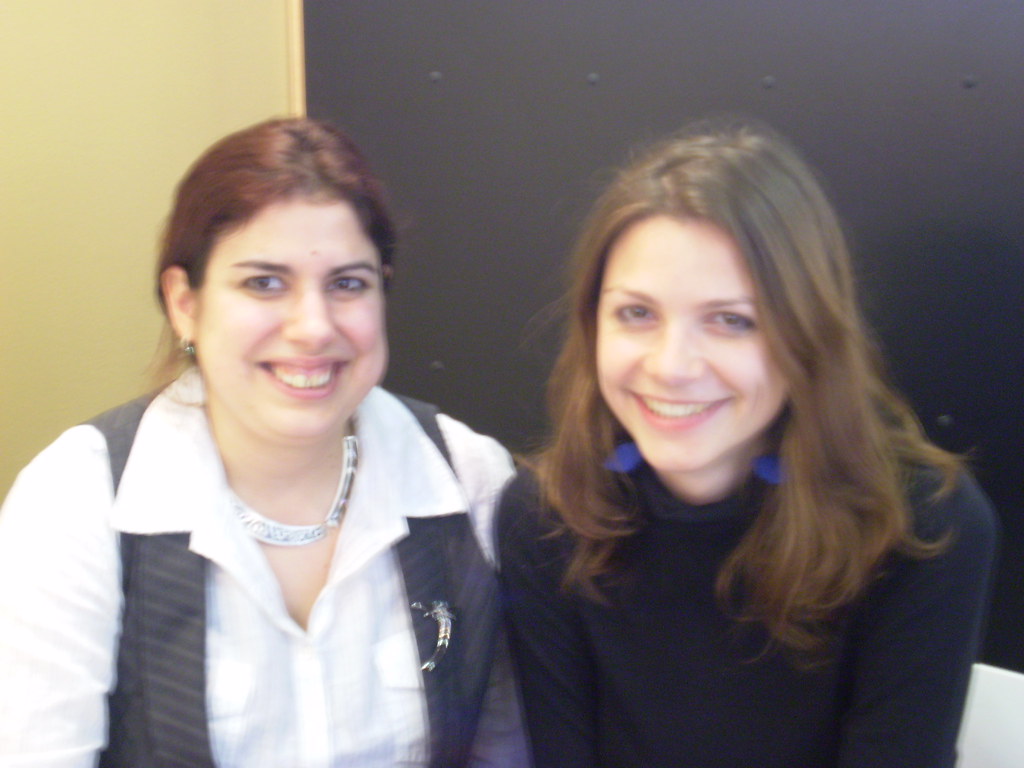
Rhiannon Lassiter and Natalia Sikora @ Bologna 2010
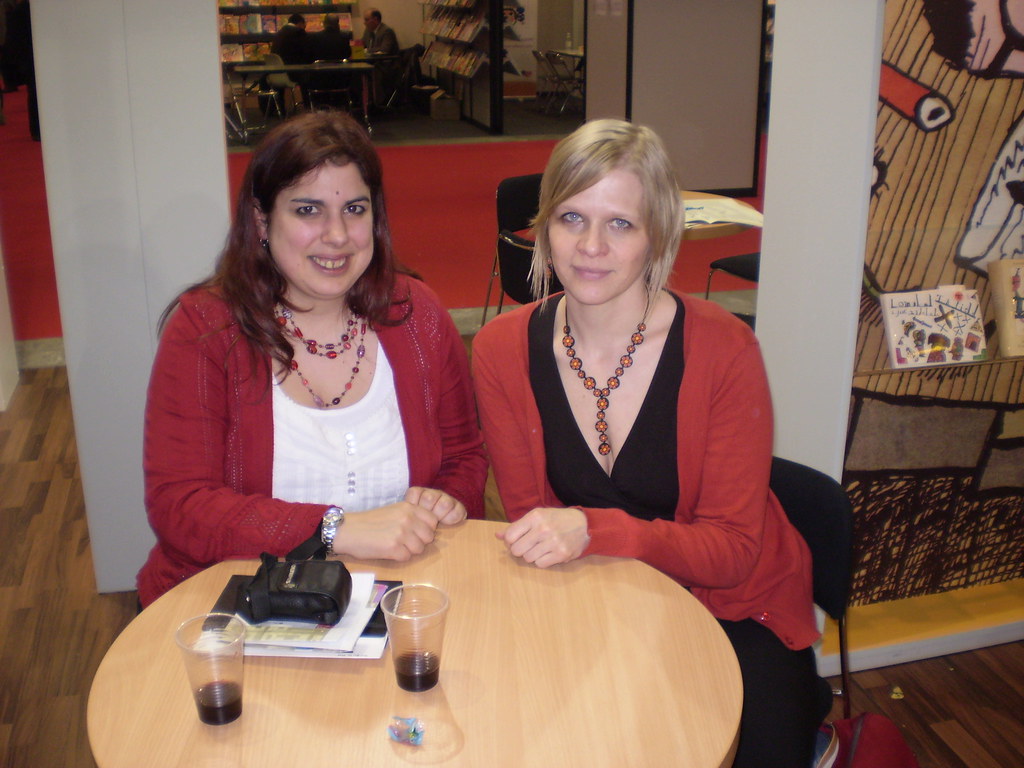
Rhiannon Lassiter and Lucie Šavlíková
I also met Lucie Šavlíková, from my Czech publishers Mlada Fronta, and Natalia Sikora from my Polish publishers Wydawnictwo WAB. I am ashamed to admit that my foreign language skills are not especially impressive (a smattering of restaurant Italian, unconvincing French, GCSE German, surprisingly helpful Latin and the ever useful Anglo Saxon) but fortunately for me everyone I met spoke English with a fluidity that made it hard to believe it was a second language for any of them. They all made me welcome at their stands and talked very positively about Bad Blood. I also caught up with some of my previous publishers of earlier books abd was flattered that they remembered me with so many books frothing and crashing into publication each year like the battering of tidal waves.
I can’t write about Bologna without a shoutout to multicultural British publishers Frances Lincoln who have only published one book of mine and that the non-profit Lines in the Sand. But although I’ve not made them one red cent they kindly sponsored me at the fair, allowed me the use of their stand and took me out to a delicious meal at one of the best restaurants in Bologna. Thank you once again, Frances Lincoln people! I tried to repay them a tiny bit by acting as a photojournalist at the launch party for my mother’s new title, illustrated by Ros Asquith, the Great Big Book of Families. I’ll upload some video and photos from the party soon. Unfortunately my trusty digital camera, all of three years old, is no match for the SLR I use at university. I fear an SLR will be an expensive piece of kit not only to buy but to travel with but it’s racking up points on my list of things I wish I owned.
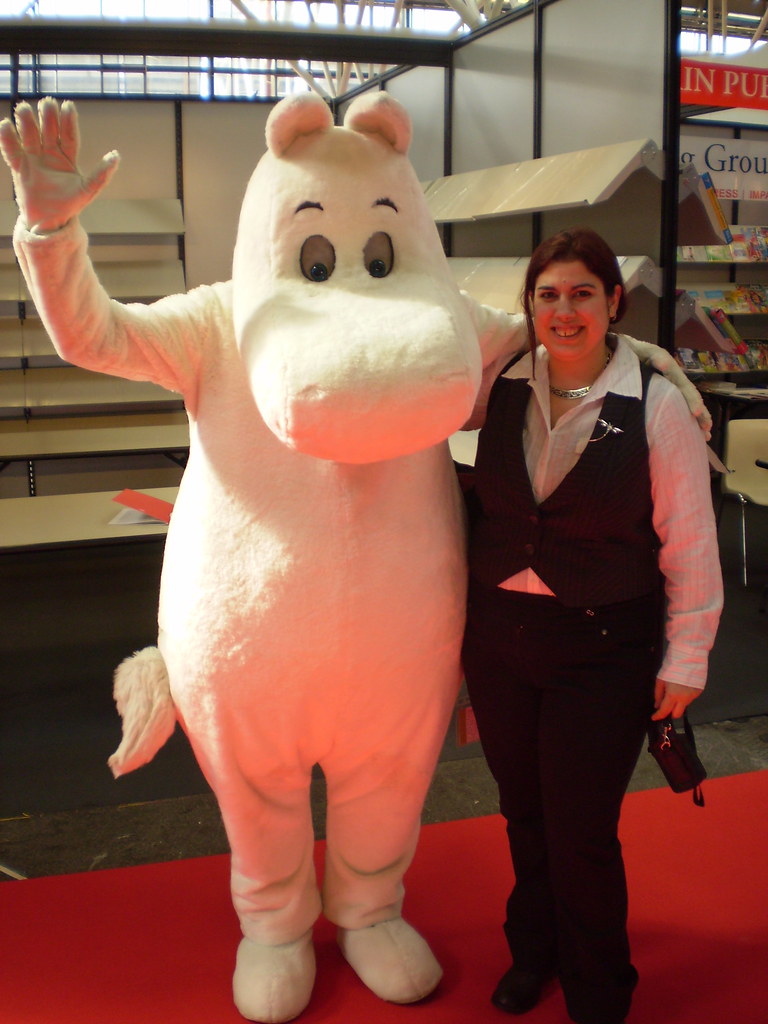
Kidnapped by moomins @ Bologna 2010
Another shoutout to the SCBWI people who had their conference the week before Bologna and were kind enough to invite me to their closing party (and Bologna opening for me) at which I met old friends and contacts, internet buddies, Lines in the Sand contributors and new writers fizzing with enthusiasm and not nearly vain enough of their success in getting deals in this difficult climate.
At the events I went to and at the fair I met more lovely people than I have time or space to mention and I’ll spare you the story of our travel adventures in the face of union action and the longest taxi queues in the world. Stay tuned to my YouTube for some attempts at videobloggery of some more book fair experience.
We stayed three days at the fair and although it was a near thing I was not kidnapped by moomins. I also managed to tear myself away from an Italy in which the sun had escaped from its prison and conjured up a emerald atlas of its own sweeping skies. I’ll be back in Italy in June for my first real holiday since Rhodes in 2008, so the sunshine will have to save itself up for me then.
Look out for Mary’s articles on the fair in Carousel magazine and Armadillo online. And, if you’re thinking of coming to Bologna in 2011, drop me a line. I’ve got several projects in pre pre production but one thing I’m sure of is that I’ll be launching Ghost of a Chance next year. If enough people I know are about I might even have a party of my own!
